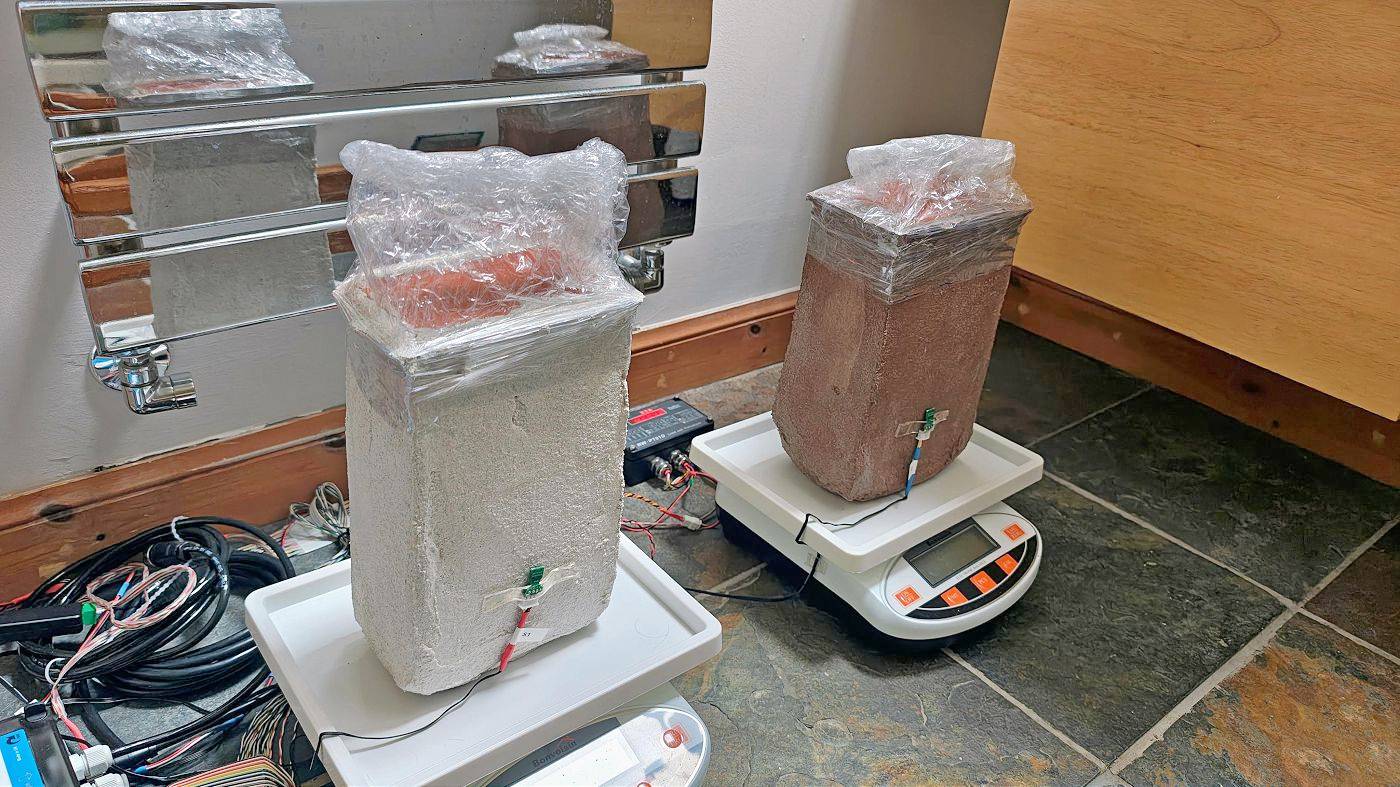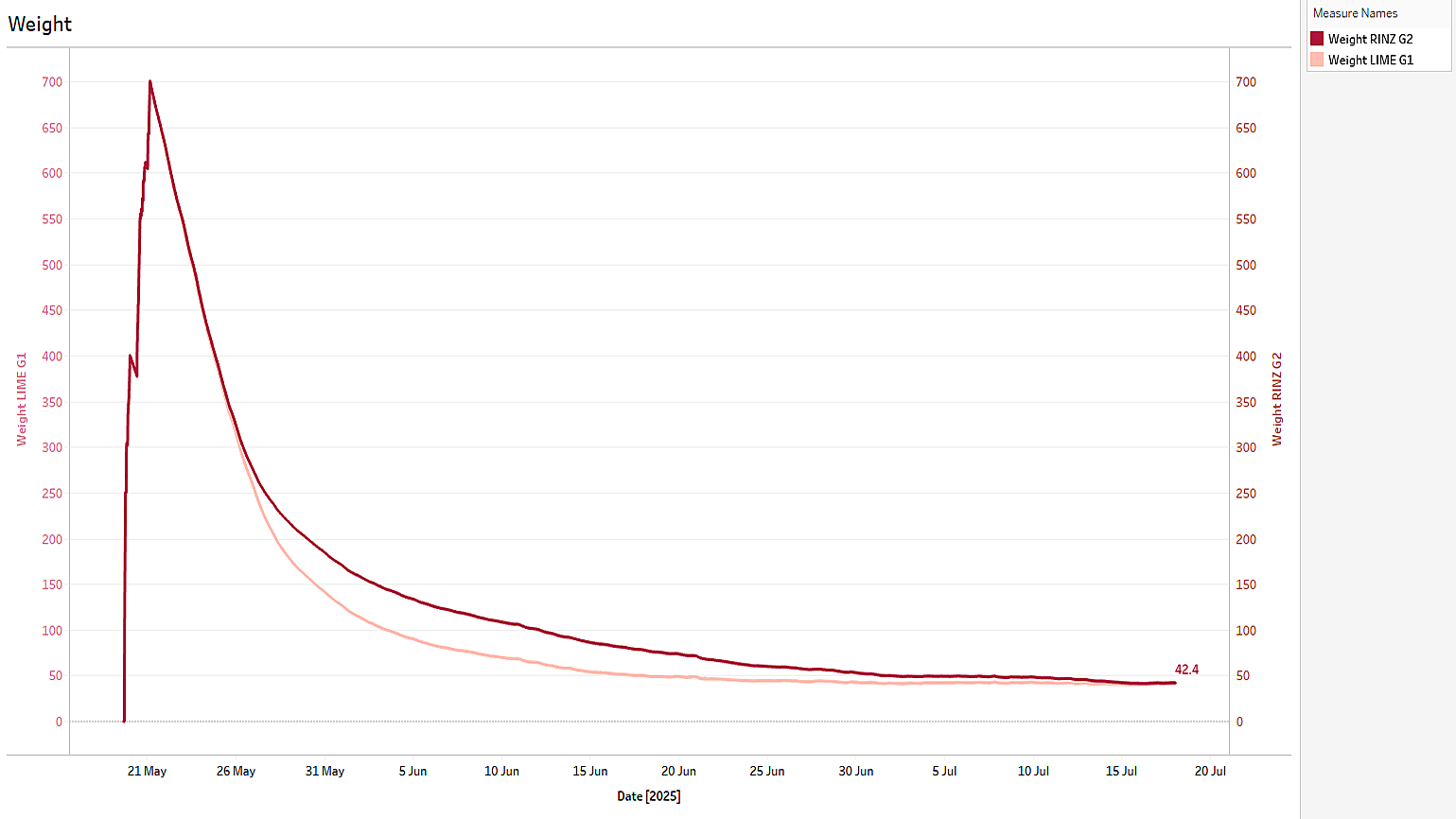
One of our unique products is RINZAFFO MGN, a plaster developed in 1980 in Venice to the problem of rising damp, penetrating damp and salts, however the origins of this plaster stretch back to ancient Roman times.
Rinzaffo MGN is a breathable, waterproof and salt-resistant lime plaster suitable for a wide range of specialist applications such as:
The RINZAFFO MGN system, due to its unique pore structure, prevents the crystallization of salts inside its pore structure. By regulating the evaporation of humidity it prevents the rapid crystallization of salts, preventing the detachment of plaster, the crumbling and deterioration of masonry.
The life expectancy of the plaster is extremely long. Even in “heavy-duty” damp and salty environments, if applied correctly, it can last over 40 years.
By adding volcanic sands and ashes (natural pozzolans) to the lime, the Romans have developed a wide range of lime plasters for a very wide range of applications - including many waterproofing applications which today are solved with modern Portland cement. Some of these Roman lime plasters were able to set underwater, being suitable for very damp environments. The longevity of these plasters was also outstanding, many of them lasting for centuries.
How can a lime plaster be waterproof and breathable at the same time? Modern research1Arizzi, A. & Cultrone, G. Aerial lime-based mortars blended with a pozzolanic additive and different admixtures: A mineralogical, textural and physical-mechanical study. Constr. Build. Mater. 31, 135–143 (2012). https://doi.org/10.1016/j.conbuildmat.2011.12.069 gave us a better understanding on how these plasters work. It all has to do with the pore structure of the material.
Normal lime plasters are macroporous, which means they have relatively large pores. Looking at their pore size distribution, most pores in air-limes are between 0.1 to 1.0 μm, with some larger pores in the 5 to 50 μm range.2 Santos, A. R. L. dos, Veiga, M. do R. da S., Silva, A. M. dos S. & Brito, J. M. C. L. de. Tensile bond strength of lime-based mortars: The role of the microstructure on their performance assessed by a new non-standard test method. J. Build. Eng. 29, 101136 (2020). https://doi.org/10.1016/j.jobe.2019.101136
Liquid water can only circulate through pores larger than 0.2 μm in diameter. Water can't penetrate pores smaller than 0.2 μm. Due to their pore distribution, normal lime plasters allow the passage of both liquid water and vapours.
The addition of volcanic ingredients to lime, depending on the type and quantity of volcanic materials mixed, can change the pore size of lime plasters. The right mix and quantity of volcanic ingredients can reduce the pore size under the critical 0.2 μm threshold, making some of these lime plasters completely waterproof while retaining their breathability.
Thus Rinzaffo MGN is an open-pore microporous (small pore) lime plaster that acts as a breathable water and salt filter. Its small pores stop liquid water. Its open pore structure allows the wall fabric to breathe. Its small open pores are impervious to salt penetration and crystallization, being free of crumbling and decay. This results in an extremely long service life of this plaster (several decades) even in very damp and demanding environments (e.g. basements), lasting much longer than any NHL plaster or other waterproofing, dehumidifying or restoration plasters operating on other principles.
To measure the breathability of the Rinzaffo MGN Roman mortar, a comparative experiment was carried out using two identical bricks. One brick was coated with a standard air lime mortar and the other with Rinzaffo. Both were saturated with 700 g of water and placed on precision scales to measure the rate of evaporation from saturated to dry. Since a more breathable material releases moisture faster, the drying rate provides a direct indication of breathability.
The results showed that both materials are highly breathable, with their drying curves closely aligned. Under very damp conditions, the curves overlap, indicating identical drying rates. At moderate moisture levels, the air lime dries slightly faster, while at lower moisture levels the Rinzaffo exhibits a faster drying rate, with both reaching a fully dry state.


Breathability is only one parameter of mortar performance. While highly breathable materials allow moisture vapour to pass freely, they are also more susceptible to water absorption3Nienhuys, Sjoerd: Tables for thermal insulation in high altitude areas of the Humalyas, Technical Working Paper Number 3 with Adjusted Values for Reflective Foils, (2012) Researchgate, which can affect other key mortar properties. Excess moisture reduces thermal performance, weakens mechanical strength, promotes salt migration and crystallisation, accelerating chemical decay and crumbling, diminishing the material’s durability and shortening its service life.
Vapour permeability and liquid water absorption must be considered together, as both parameters are important when choosing the right mortar for a specific conservation job. The chart below illustrates this relationship, showing the breathability (μ) and capillary water absorption of different mortar types.
Highly breathable air lime mortars allow moisture vapour to escape easily, but their open pore structure also promotes rapid moisture uptake under humid conditions. In contrast, dense cement-based mortars resist well water ingress, but having low breathability they trap moisture, leading to the long-term deterioration of historic structures.
Lime–pozzolan mortars perform optimally in this regard, combining low capillary water absorption with high vapour permeability (μ ≤ 15), resulting in a long service life and excellent compatibility with historic masonries. These properties explains the remarkable longevity of many Roman structures, which have survived for centuries even under demanding environmental conditions.
The Rinzaffo MGN Roman lime mortar stands in stark contrast to modern NHL (Natural hydraulic lime) mortars.
NHL mortars are made of lime and clay. These require higher firing temperatures (around 1200 °C) than normal air limes (850-900 °C) to ensure proper reaction between ingredients. The higher temperatures partially close off the pores, making NHL plasters less breathable than air limes. As a result, NHL plasters gain water resistance at the expense of breathability.
The Rinzaffo MGN's ancient recipe combines lime with a variety of volcanic sands and ashes. These are mixed to the lime at room temperature (without heat) as the volcanic sands and ashes have already been pre-burnt by the volcano. The lack of industrial heating retains the open pore structure of the mix resulting in high breathability.
Furthermore, in Rinzaffo MGN, a portion of conventional sand is replaced with volcanic sands. Unlike dense quartz sands resembling glass, being impermeable to water vapours, volcanic sands are highly porous, contributing to the plaster's breathability.
Here are the recommended work specifications for this plaster.
[15-20 mm] ABOVE GROUND: Lime base coat, applied as:
[25-30 mm] UNDER GROUND: Lime waterproofing coat or for very damp wall sections, applied as:
Here are some key technical points about how to apply this material correctly. Please have the applicators read / watch the application instructions below before applying the product.
APPLICATION VIDEO:
APPLICATION INSTRUCTIONS:
VERY IMPORTANT POINTS
Here are a few very important points, highlighted in red, that MUST be respected for the correct application of this plaster.
– – – – –
VERY IMPORTANT POINTS
Here are a few very important points, highlighted in red, that MUST be respected for the correct application of this plaster.
– – – – –
Here are some key technical documents (spec sheets, application guide etc.) about this plaster.
If you have any questions about a project, a problem, a solution, or any of our plasters - please get in touch.
We understand that each project is unique. Using the contact form below feel free to ask us any question. Give us as much detail as you can about your project so we can get back to you with more relevant answers.
This product has won or been nominated for the following industry awards:
Here are some of our projects using this plaster:
This material can be used in the following applications or solutions:
Here are some photos demonstrating this solution. Click on any image to open the photo gallery.
This old garage has been built into a hillside, with all of its walls fully underground. Over time, water began seeping through the mortar joints. The owners decided to address the dampness problem by replastering the garage walls and ceiling with the Roman lime waterproofing system.
Here is an old cottage in a conservation area. Due to the poor condition of the cellar, the cellar space was unusable. The floors were just uneven compacted earth. The walls were damp, salty and the masonry was slowly crumbling and decaying.
As part of a whole-house renovation, the owners wanted to improve the condition of the cellar, the make it dry, stop the decay and to make it suitable for storing miscellaneous things.
Here are some other similar products of the same category (e.g. other main coats or finishes). Depending on your application, you could use these as alternative products.
Although all MGN plasters can be used on their own, in many applications they perform best when certain materials are applied together as a plastering system complementing and reinforcing each other.
Here are some other plasters which are recommended to be used with this one.